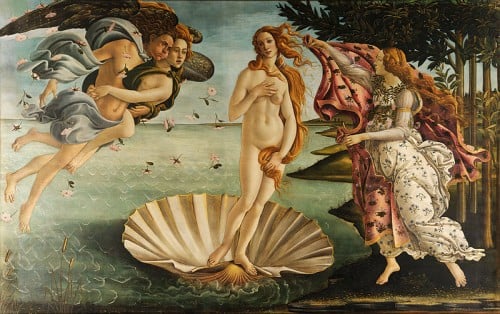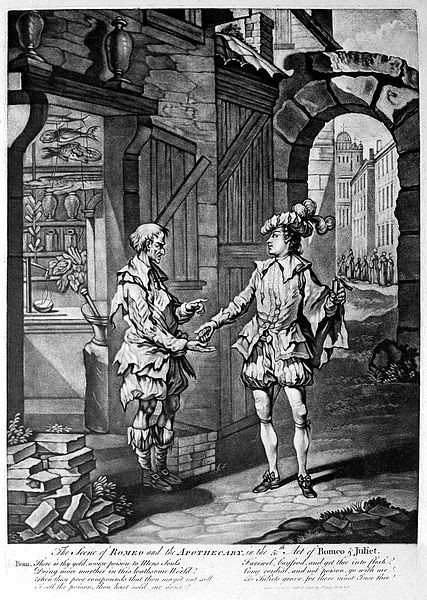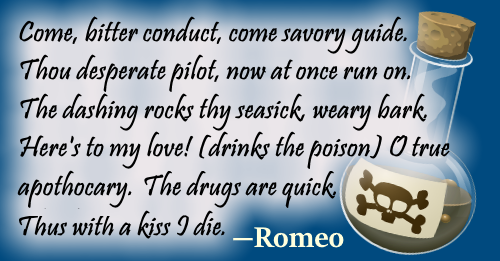You know those classes that seem to drag on forever? The clock on the wall mocks you by moving slower. The breeze sweeps in through an open window and calls to you.
These are examples of personification—the clock mocking and the breeze calling.

I know you might not be looking forward to your essay on personification in Romeo and Juliet, but this literary device is one of the easiest to spot. I promise it won’t be too difficult to build your support for your essay.
But I’m getting ahead of myself.
First, I’m going to show you what personification is exactly and where to find it in the play. To give you another little boost, I’ll even throw in a few thesis statement examples to help inspire your writing.
So let’s get started, shall we?
What Is Personification?
So what exactly is personification? Well, just look at the first half of the word: person. This literary device makes objects or ideas more like people.
There are two different types of personification:
- Giving human qualities to something that isn’t human
- When a human character represents an abstract idea or quality
This first type, giving qualities to something non-human, could look something like, “The kettle shrieked on the stove.” Kettles can’t speak, scream, or vocalize in any way. In this instance, however, you would want a reader to know just how loud and high-pitched the sound was.
Personification helps your readers relate to and better understand your writing— it fills in the details and descriptions in vivid ways.
(Just don’t overdo it, or your writing could end up reading like The Brave Little Toaster where objects are described as truly alive.)
The second type, characters representing an abstract idea—such as love, hate, evil, innocence, virtue, etc.—can be a little harder to detect. However, when you see that a character strongly symbolizes or represents something else, you can say he or she personifies it.
One example is Venus as the personification of beauty in Roman art and literature. Another one is the personification of evil in Chillingworth in The Scarlet Letter.

In this type of personification, you’re saying that a person or character is so linked to a specific trait that the person could define it. If you were to look up the trait in a dictionary, it would just show this person’s picture. (Not literally, but you get the idea.)
Where to Find Personification in Romeo and Juliet
Now that you have a better idea of what personification is, let’s get into the specifics of its use in Romeo and Juliet.
When you’re looking through your text, it’s pretty easy to find the first kind of personification I mentioned—when a non-human object takes on human traits.
Shakespeare loved to be descriptive, so most of his characters have some pretty over-the-top language.
This first kind of personification can be found in literally any act of the play. However, taking note anytime anyone uses personification is kind of pointless. All you’ll end up with is a long list of quotes with no order or central theme.
For example, one of these 15 examples of personification in Romeo and Juliet wouldn’t make a good topic on its own to flush out an entire paper.
What will help your essay about personification in Romeo and Juliet is if you concentrate on lines spoken by one character—Romeo, Juliet, Mercutio, Benvolio … they pretty much all do it—or concentrate the examples around a certain theme, such as love, death, violence, or fate.
The second type of personification—when a person represents an abstract idea—is a little more difficult.
I suggest going through the characters and picking out their strongest personality traits: the nurse’s compassion, Romeo’s romanticism, Mercutio’s quick wit, etc. Then think about how much these characters are symbols of those traits.
More complex characters tend to have many different traits, so they aren’t typically great examples of personification (but sometimes they can be). My favorite is the apothecary as a personification of death.

If you can give the right amount of support to your argument, there’s no “wrong answer.” That’s the beauty of literature: it’s yours to interpret based on evidence in the text.
Need some extra inspiration? Check out 10 Heart-Stopping Topics for Your Romeo and Juliet Essay. The topics might not specifically be on personification, but they might help you narrow down your focus on specific themes, ideas, or dialogue.
Thesis Statements about Personification in Romeo and Juliet
While all of this information is good and well, how on earth are you supposed to actually write your essay on personification in Romeo and Juliet? You need more than just some hastily thrown-together examples. (That’s not really an essay, is it?)
Like I said before, don’t focus on every personification example you can find. Focusing on a theme or a character can help you develop a smarter paper.
And it all starts with a strong thesis statement.
Your thesis statement is a sentence or two that tell the reader the point of your essay. The statement should describe what your essay is about and give some broad support. (You’ll get into the finer details of your support later in your body paragraphs.)
So what exactly does a thesis statement look like for an essay about personification in Romeo and Juliet?
Well … I’m glad you asked! I keep a couple thesis statements hidden up my sleeve for occasions just like this.
Thesis Statement Example 1
For my first thesis statement, I’m focusing on the first kind of personification I mentioned (human qualities in a non-human object), concentrated around the theme of love.
It might read something like this:
In Romeo and Juliet, William Shakespeare uses personification to emphasize the love between Romeo and Juliet. These characters use personification to describe their feelings for one another, especially when they are alone together.
For my support, I would pull examples from the balcony scene (Act 2, Scene 2), including the following lines:
- “By love, that first did prompt me to inquire. He lent me counsel and I lent him eyes.”
- “Love goes toward love, as schoolboys from their books, but love from love, toward school with heavy looks.”
Both of these lines are spoken by Romeo and are personifying love itself. The first line treats love as a wise person who led Romeo to fall in love with Juliet in the first place.
The second line describes love as lovers going toward and away from each other. The schoolboys and books describe how Romeo doesn’t want to leave Juliet and his excitement to see her the following day.
Thesis Statement Example 2
The second kind of personification (when a human character represents an abstract idea or quality) needs a different kind of thesis statement.
Mine would look like this:
In William Shakespeare’s Romeo and Juliet, the apothecary serves as the personification of death, ultimately giving Romeo the poison that kills him and acting as a catalyst for Juliet’s suicide.
In addition to going into more depth about the poison that kills Romeo and, by extension, Juliet (even though she doesn’t actually drink the poison), I would also talk about the other symbols of death that surround the apothecary.
These include things in his shop, such as the skins and bladders of dead animals. I would also write about his appearance, mentioning his death-like or dead-like features, including his worn clothes and the fact that “misery had worn him to his bones.”
Now that you have a solid understanding of what personification is and how to use it in your Romeo and Juliet essay, the rest is relatively smooth sailing.
If you hit any turbulence or just want a second set of eyes to check for mistakes before you turn it in, send it to one of our Kibin editors.
They’ll review your essay and make suggestions for edits. With their help, your essay will shout to the world how much of an awesome literary analyst you are.

